THE INTERVIEW
THE INTERVIEW
THE INTERVIEW
You also want an ePaper? Increase the reach of your titles
YUMPU automatically turns print PDFs into web optimized ePapers that Google loves.
<strong>THE</strong> <strong>INTERVIEW</strong>An Effective Interview:• Convinces the interviewer/employer that you are the best candidate.• Creates a strong positive impression.• Reflects self-confidence and enthusiasm.• Demonstrates interest, willingness, and oral communication skills.The interview is the final hurdle in the job search process. It iscommon for the interview stage of the Job search to bring outfeelings of both excitement and apprehension. Preparation is thekey to a successful interview. In an interview setting, yourrepresentation of yourself involves both verbal and non-verbalbehavior. Candidates who best prepare for the interview andexpress their qualifications effectively have the best chance of beinghired.The First Ten Seconds:What you do and say in the first ten seconds of an interview maydetermine whether you are hired, according to Robert Half,President of Robert Half International. Some prime examples ofinitial interview behavior that could result in a candidate's rejectioninclude: weak handshake, failure to maintain eye contact,slouching in the chair, lack of enthusiasm, poor grooming, a hostileor abrasive behavior, boastfulness, and treating a secretary orreceptionist in a condescending manner. Remember, the firstimpression is almost always a lasting impression.Interview Preparation:An important step in preparing for an interview is researching thecompany or organization. Researching enables you to developappropriate interview questions. It is important to includecompany information in the dialogue portion of the interview. Thisdemonstrates your interest in the company.RESOURCE INFORMATIONUse the following sources to research the employer's culture,products, customers, new ventures and finances:• Company Web Sites• PR publications• Newspaper articles• Company advertisements• Company literature• Annual reports & Stock reports• Organization chart• Library references
EMPLOYER INFORMATIONSize of the organizationAnnual sales, growth and history of the companyCompany product lines, services, programmingOrganizational structureCompany subsidiaries, locations, plants, distribution centersFormal/on-the-job training programsTypical career paths in your fieldTarget populations, prospective customers/clientsCompany reputation, philosophy, policies and benefitsYou've probably heard the old adage, “You never get a second chanceto make a first impression.” Visual impressions are very importantin the interviewing process. Dressing professionally requires aninvestment in quality career accessories. Invest in quality clothingwith classic styles.• Proper attire for men:Traditional business suit (navy, black, brown or grey)Polished shoes• Proper attire for women:Traditional business suit (navy, black, brown or grey)Dress with matching blazer Limited make-up andjewelry Polished shoes (low heels) and nylonsListed below are some typical questions employers ask during aninterview. Take time to practice and prepare answers for these questions.1. Tell me about yourself.Spend 30 seconds on autobiographical information, 30seconds on education, 30 seconds on work history and 30seconds on personal characteristics and qualifications.2. What are your long- and short-term career objectives?3. Why have you chosen to pursue this career/academic major?4. What are your strengths/weaknesses?Minimize faults and never disclose anything thatmight disqualify you. Be objective about yourself.5. In what ways do you think you will contribute to the company?6. Why did you decide to seek a position with this company?7. Why should I hire you?
Types of InterviewsScreening InterviewThe first interview, usually with the human resources department, isgenerally short in duration ( 1 - 1 1 / 2 hours). This is used as a "weedingout" process by the employer. This type of interview may be conductedvia telephone. General questions are asked to determine if you meet theirminimum qualifications.In-depth InterviewThe second interview can be a half- to full-day in duration. Thecandidate will meet with various personnel (perhaps in a group setting) withinthe company or organization. Specific or situational questions are askedduring this interview. It is important to establish a rapport withthe interviewer.Behavioral InterviewThe objective of behavioral interviewing is to ensure a match of values andstyle, not just skills. Applicants are asked specific situation-related questions,such as: What examples can you give me in which your work made adifference? How would you approach this assignment or problem on the job?What would you do in this situation?Group InterviewSeveral individuals may interview you at the same time. The best strategy is toask questions and differentiate yourself from the competition.Telephone InterviewMake sure you are in a quiet place, eliminate all distractions, take notes andconcentrate on the interviewer's voice.Meal InterviewLet the interviewer order first; then choose a similar item, equally priced.Order meals that can be cut up instead of messy items such as pasta.The Interview ProcessYou will encounter many different interviewing styles and techniques in thejob search process. Interviews may be very structured within an office settingor casual, more dialogue-oriented in a relaxed environment. Techniquesrange from very high pressure/stress-oriented questioning to a scenario ofgood/bad interviewer between two interviewers. Whatever style or techniqueyou encounter, it is important to be prepared for anything and everything;focus on the interview; respond accordingly to questions; maintain yourprofessionalism.
An interview progresses through a series of stages.1. The Introduction develops rapport between you and the interviewer.Shake hands firmly with the interviewer and maintain good eye contact.The interviewer will usually open with an icebreaker (i.e., Did you haveany problems finding our office/parking?); smile and listen carefully.The interviewer will set the tone of the interview during the introductorystage. Evaluate the interviewer's tone, intensity, fashion and approach.2. The second part of the interview is Question & Answer. Typicalquestions are asked by the employer to establish a dialogue. Build aconnection and demonstrate your knowledge about the company.Articulate what you can do for the employer. This is the most criticalpoint of the interview for the candidate. Answer questions in detail,citing specific experiences to substantiate your response. Reiteratepersonal qualities.Interviewing "Hot Spots" - Every interview has a few tense momentswhen candidates might feel defensive. Evaluate these moments: Is theinterviewer being obnoxious or does he/she have a valid concern aboutyour ability? You must be prepared to discuss a troubled personal orprofessional history.Dealing with illegal/unfair personal questions - Based on federal laws,certain personal questions (marital status, children, religion, nationalorigin) are illegal. Nevertheless, interviewers will ask those questions.In the event that they do, here are some suggestions: Try turning theillegal question around to your advantage by determining what jobrelatedquality they are seeking and respond to it. Use the opportunityto sell yourself, stress your ability to perform all aspects of the positionregardless of age, marital status, etc. Be courteous but firm in yourresponse and think through possible responses beforehand.3. The final stage of the interview is Closure. This concludes theinterview. Reaffirm your interest in the position. Ask any questions youmay have or ask for clarification on some of the information that has beenexchanged during the interview. Smile and thank the interviewer forhis/her time and consideration. Shake hands firmly before leaving.The Thank You Letter - Send a brief thank you letter to the interviewerwithin 24 hours of your interview. This will again reaffirm your interestin the position and/or company, draw attention to your name as apotential candidate and show your appreciation.


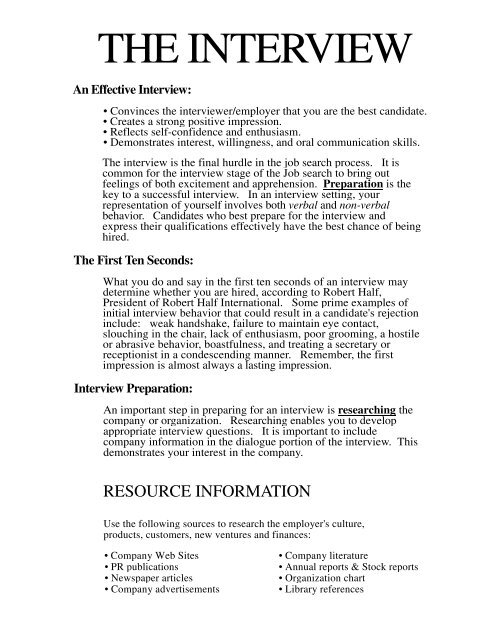
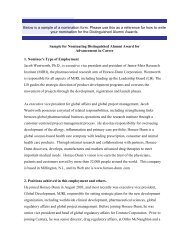
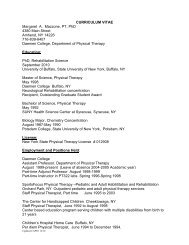
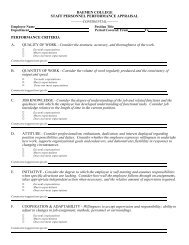
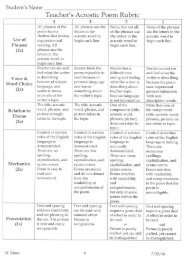

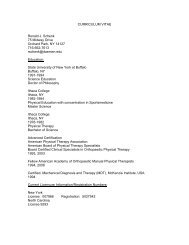
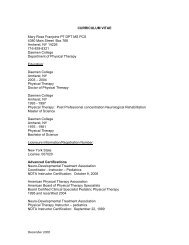


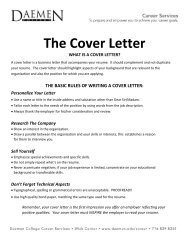

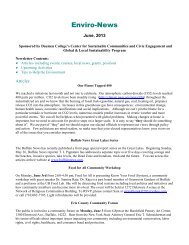

![[ DISTINGUISHED FACULTY ] - Publications - Daemen College](https://img.yumpu.com/31722837/1/188x260/-distinguished-faculty-publications-daemen-college.jpg?quality=85)